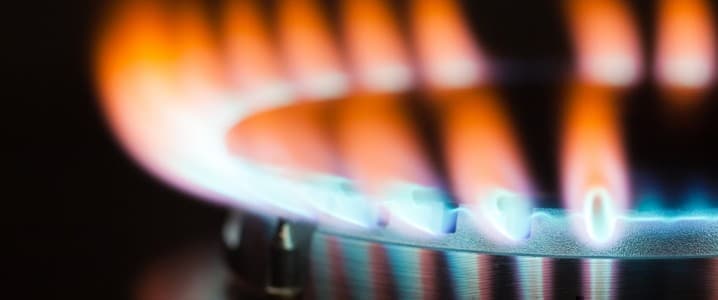As Oilprice readers know, the price of energy has spiked (to put it mildly) in Europe. Sample residential bills have more than doubled in some places from last year to this. In response, European governments want to help their hard-pressed citizens, not to mention hard-pressed businesses. Russia’s war against Ukraine caused the spike in prices and in wartime governments often take what they believe to be essential steps to control their economy. So what to do? Right now a Europe formerly dependent on Russian gas has two options. First, put a cap on energy prices. That at least prevents further economic pain because it keeps prices from rising more. But this creates another set of problems. What if the price cap is set meaningfully below current market prices? In other words, if for example gas prices are set by the government at $1 but the supplier of gas has to pay $2 to drill for or purchase gas, who makes up the difference? Either the supplier loses $1 on each transaction or does the government compensate suppliers for all or most of the $1 difference? Obviously, suppliers can’t stay in business while losing money on each transaction (they can’t make it up on volume) so the government has to step in. But, by government action to cap prices, the customer does not receive an accurate price signal that energy is in scarce supply and perhaps should be consumed more carefully. This well-intentioned policy spares the customer pain—until either the energy supplier or the government decides that this financial burden is too much. But this type of government policy does not address the root cause of the problem which is too much demand relative to a supply scarcity.
Related: BofA Sees Drop In Saudi Aramco Quarterly Earnings
The other means by which governments can provide relief for high energy prices is to simply give energy consumers cash. This subsidy method, sometimes called a rebate, has a distinct advantage in that it aids the consumer but leaves in place the incentive to use less of the scarce resource due to high prices. Good policy, but now the government has to figure out who should get how much money. By usage? By income? Imagine how well-connected industrialists and the wealthy could manipulate the payments to their advantage. And, of course, the government pays.
Some politicians have proposed a windfall profits tax on energy company profits and would use these revenues as energy rebates. The rationale for this is that oil and gas companies and electric generators are reaping huge fortunes at the expense of the citizenry for reasons that have nothing to do with their business acumen or smart investments. Mr Putin’s recent aggression and stricter Saudis drilling targets are making them rich. So charge a punitive tax on the excess profits being earned now and give the money back to consumers. It’s a great idea except for its consequences—it serves to drive away new corporate investment in the long run. Redistributive ideas like this are asymmetrical. No one ever proposes an oil company subsidy or negative windfall tax payment when energy company profitability is weak during an economic recession for example. Who wants to invest in a business in which you can keep large losses but are denied periodic big profits?
Related: Colombia Is On The Brink Of An Energy Crisis
Another possibility is that the sellers of energy could set up a price scale that raises the price as usage goes up. In other words, you pay $1 per unit for the first hundred units, then $1.50 for the next hundred, and $2 per unit thereafter. In theory, this rising scale creates an incentive for conserving energy. However, we know that electricity and natural gas usages are relatively inelastic to price or income in the short term. That means raising prices will only have a minimal impact on demand. But that is good news in a perverse way because it means the energy supplier will collect more from high volume users (presumably but not necessarily wealthier) and transfer that extra payment to the low-volume (presumably poorer) users in the form of a price subsidy (for their lower volumes consumed). The only trouble with this scheme is that the suppliers have to keep track of use per customer and make sure that customers are not sneaking in extra usage from another supplier. This pricing is common for regulated monopolies but Europeans (and especially the British) don’t like monopolies.
In the short term, people and industries cannot adjust usage much in the face of higher natural gas or electricity prices or changes in income. Such is the nature of inelastic demand. But in the long term they can. In other words, a 10% price increase affects short term demand by 2% at best but affects long term demand by 12%. A decline in income (expected in the coming year) plus higher prices likely will decrease demand. Continued high prices would tank demand. (Customers need time to buy new furnaces or LED bulbs.) But in the end, continued high prices will do more than shift demand from Russian to Qatari gas. The prospect of continued high prices will destroy demand for natural gas forever. Short term, Europeans could face a winter of lowered thermostats, cold showers, idled industrial facilities, and dimly lit streets. But longer term, we suspect energy managers might want to consider the impact of stranded fossil fuel assets because longer term Europeans will be using a lot less gas than before the Russia-Ukraine war.
By Leonard Hyman and William Tilles for Oilprice.com
More Top Reads From Oilprice.com:
- Biden’s Plan To Refill The SPR Is Unlikely To Boost U.S. Oil Output
- Colombia Is On The Brink Of An Energy Crisis
- Biden Just Put A Floor Under Oil. Will It Work?


















